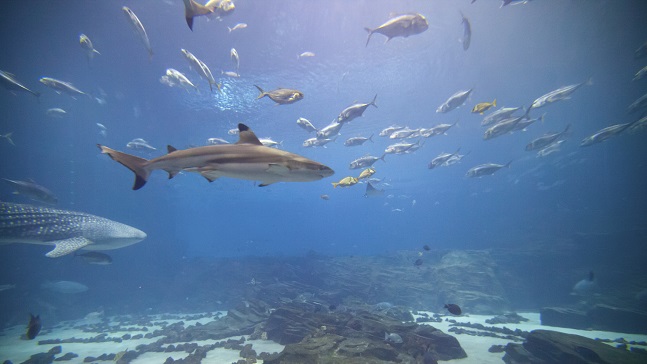A group of researchers published new sets of primers for fishes and tested their versatility on eDNA samples from aquarium tanks and natural seawater.
Follow our blog ! Subscribe to our RSS fluxIn July 2015, Miya et al. published a paper entitled “MiFish, a set of universal PCR primers for metabarcoding environmental DNA from fishes: detection of more than 230 subtropical marine species ” in the “Royal Society Open Science ” journal.
Summary: In this study, the authors developed a set of universal PCR primers (MiFish-U/E) for metabarcoding environmental DNA (eDNA) from fishes. Primers were designed using aligned whole mitochondrial genome (mitogenome) sequences from 880 species, supplemented by partial mitogenome sequences from 160 elasmobranchs (sharks and rays). The primers target a hypervariable region of the 12S rRNA gene (163–185 bp), which contains sufficient information to identify fishes to taxonomic family, genus and species except for some closely related congeners. To test versatility of the primers across a diverse range of fishes, the researchers sampled eDNA from four tanks in the Okinawa Churaumi Aquarium with known species compositions, prepared dual-indexed libraries and performed paired-end sequencing of the region using high-throughput next-generation sequencing technologies. Out of the 180 marine fish species contained in the four tanks with reference sequences in a custom database, they detected 168 species (93.3%) distributed across 59 families and 123 genera. These fishes are not only taxonomically diverse, ranging from sharks and rays to higher teleosts, but are also greatly varied in their ecology, including both pelagic and benthic species living in shallow coastal to deep waters. The authors also sampled natural seawaters around coral reefs near the aquarium and detected 93 fish species using this approach. Of the 93 species, 64 were not detected in the four aquarium tanks, rendering the total number of species detected to 232 (from 70 families and 152 genera). The metabarcoding approach presented here is non-invasive, more efficient, more cost-effective and more sensitive than the traditional survey methods. It has the potential to serve as an alternative (or complementary) tool for biodiversity monitoring that revolutionizes natural resource management and ecological studies of fish communities on larger spatial and temporal scales.
Reference: Miya, M., Sato, Y., Fukunaga, T., Sado, T., Poulsen, J.Y., Sato, K., Minamoto, T., Yamamoto, S., Yamanaka, H., Araki, H., Kondoh, H., Iwasaki, W. (2015). MiFish, a set of universal PCR primers for metabarcoding environmental DNA from fishes: detection of more than 230 subtropical marine species. Royal Society open science. 2: 150088.
For more information, see Miya et al. 2015.


